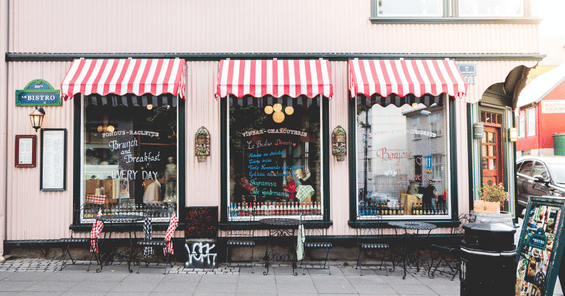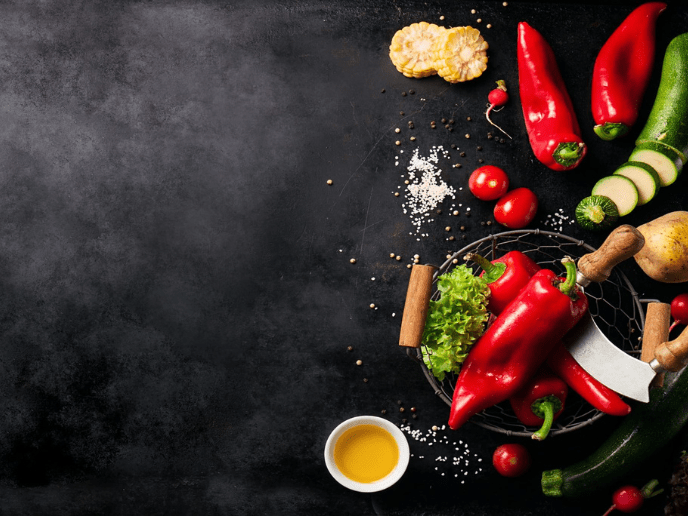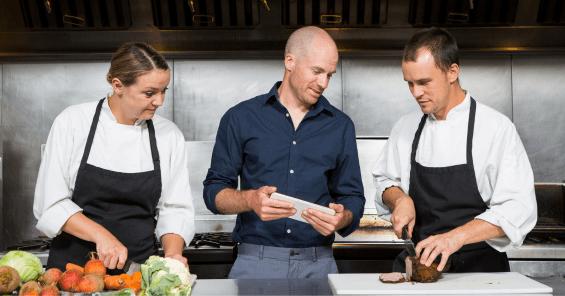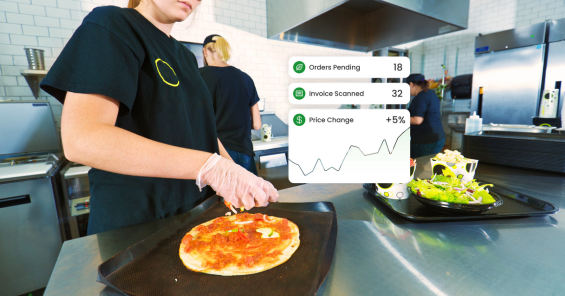

How to Purchase from Multiple Restaurant Vendors Effectively
Navigating the complexities of buying from multiple food vendors can be a daunting task for restaurant owners. This comprehensive guide offers actionable tips and strategies to streamline your purchasing process, improve profit margins, and ensure an uninterrupted supply chain.
Managing your food vendors is an essential step in keeping your restaurant business running smoothly. Without an effective purchasing process, you could end up paying over the market value for certain food items or even facing delayed deliveries.
From choosing the best distributors for each product to organizing your receiving process, there are so many aspects to consider when it comes to purchasing.
If you’re looking to increase the number of vendors you buy from or you’re hoping to set up a better system for managing your existing distributors, you’ve come to the right place. We’ve put together this quick and easy guide to purchasing from multiple restaurant suppliers to tell you everything you need to know.
How To Start And Grow Your Restaurant Business
Whether you're embarking on launching your first restaurant, opening a second (or third) location, or ready to turn your restaurant business into a franchise, this guide will help you make the smartest decisions possible for your business

The Benefits of Purchasing From Multiple Restaurant Vendors
There are several reasons why you should consider diversifying your restaurant supply chain. You could save money on individual items and reduce your risk of running into supply issues.
Getting the Best Price for All Food Items
Some food suppliers might offer low prices on fresh food and produce but charge more for dry goods and beverages. You can avoid paying more than you need to by purchasing each type of foodstuff from a different supplier.
If you work with multiple distributors, you can also bargain with each vendor to make sure you’re getting a good deal on every item you purchase. You’ll see your overall food costs decrease and your profit margins improve.
Ensuring an Uninterrupted Supply Chain
Relying on only one food supplier to source all your food items is risky. You could run into severe problems with your food service if they face supply issues or want to increase their prices without warning.
But purchasing from multiple restaurant vendors is an easy way to ensure you have complete inventory control.
If you order from several restaurant suppliers, you’re less likely to suffer interruption to your own supply if they face issues. You can simply order any missing products from another vendor.
Similarly, if one of your vendors decides to increase the cost of a particular item, you can choose to source it elsewhere without ending the relationship altogether.
Supporting Small Businesses
It’s often tempting to work solely with bigger restaurant suppliers because of their large-scale operations — it’s very convenient to order everything from the same place and they’re more likely to offer discounts for bulk orders.
Smaller suppliers that operate in a particular area, however, usually have better access to locally sourced ingredients and high-quality products. So, if you purchase even a few items from a small supplier, you can improve the quality of the food you’re serving and support local businesses and food producers.
4 Tips for Purchasing From Multiple Restaurant Vendors
1. Don’t Choose a Vendor Based Solely on Price
Keeping prices down is essential for running a restaurant business, but you need to balance low costs with high quality. Instead of focusing on costs alone, ask yourself the following questions:
- How much do you trust the vendor?
- Can they supply high-quality products?
- Can they meet your delivery schedule?
It’s also good to work with specialist food vendors for particular ingredients. For example, choose local suppliers if you want the best fresh produce; local farmers can provide fresh ingredients to restaurants, meaning you can order fresh fruit and vegetables directly from farms.
Other fresh ingredients, such as seafood and meat, will likely be of a higher quality if you order from suppliers who sell only those products.
Consider a trial period with each new vendor to ensure you have a good supplier relationship before committing to a long-term contract.
2. Order Only What You Need
Ordering in bulk from a single supplier may look cheaper on paper, but it could be more expensive in the long run — especially if you’re throwing food away regularly. An easy way to keep prices down and reduce unnecessary food waste is to order only what you need from each supplier.
Keep a detailed list of everything you need for upcoming menus and how much you’re likely to sell based on your order history. Use this list to inform how much of each item you order for next month.
3. Establish a Receiving Process (Or Revisit Your Current One)
Working with more than one supplier means you’re likely to have multiple deliveries coming in at various points each week. Your current receiving process may not be able to accommodate all those different orders.
Establish a thorough process for receiving multiple deliveries. Assign one member of your BOH team to receive orders, and set up a checklist that includes
- Checking orders against receipts for price and quantity
- Checking for missing items
- Checking for spoiled, expired, or damaged items
- Checking temperatures of cold-storage goods and the delivery truck
Once your team has approved and accepted the delivery, they should take care to store the items quickly and efficiently. That will help maximize the shelf life of every item and comply with proper food safety procedures.
AT POINT OF DELIVERY
- Read over the invoice and make sure everything in the order is present
- Check the cleanliness and condition of the food packaging for all items
- Check the expiry dates of all items
- Check for any food that looks spoiled or damaged – reject this!
- Check the temperature of all cold-storage goods
- Approve delivery
POST DELIVERY
- Prioritize cold-storage goods by transferring them to the walk-in or freezer as soon as received
- Always rotate inventory when receiving so that older inventory is used first
- Ensure all items are handled with care
- Complete delivery in a timely manner; always make receiving a priority>
4. Keep Track of Vendor Credits
If you agree to pay your vendors in advance, there will probably be instances when you over-pay and need to claim back the excess via credits.
You must keep careful track of any and all vendor credits you receive. Make a note of them in your accounting system so you don’t accidentally overpay the vendor in the next billing cycle.
How Restaurant Inventory Management Software Can Improve the Purchasing Process
When purchasing from multiple restaurant vendors, things can quickly get complicated. You have more invoices to manage and pay, more deliveries to organize, and more food to keep track of.
Using inventory management software can simplify the process and help you manage all your vendors in one place.
Using Restaurant Inventory Software to Manage Invoices and Receipts
Good restaurant inventory software can be used to store all your invoices and receipts in one place. That means you’re unlikely to miss an upcoming payment or go over your monthly purchasing budget, as you’ll be able to see exactly what payments are due and when.
Once you’ve paid, you’ll have all your receipts in one place, making your accounting process much more straightforward.
Using Software to Manage Orders
You can also use restaurant management software to place, track, and manage orders. Simply select the relevant supplier, category, or individual item, add what you need to your cart, and click submit.
Alternatively, automate the process by using software to track your inventory turnover and place orders for you when items are running low.
Using Software to Keep Track of Food and Vendor Prices
Most restaurant owners are all too aware of how frequently and by how much food costs fluctuate. It’s constant!
The good news is that it’s even possible to use restaurant management software to keep track of the prices of individual food items. By tracking your outgoings precisely (and with no human error), you can ensure that each dish on your menu remains profitable, as you’ll know precisely when to increase your own prices.
Whether you own a single cafe or a chain of FSRs, you must have a smooth process in place for managing each food vendor you work with. Use the right tools to order and pay for food deliveries and keep a close eye on every aspect of your restaurant business.
From tracking your expenses and managing your orders to costing individual recipes and reducing waste, restaurant management software can be incredibly useful.


MarketMan's restaurant inventory management software simplifies back-of-house processes, from inventory management to food cost control. Automate daily tasks, reduce waste, and gain actionable insights to boost your restaurant's profitability. Take the guesswork out of operations and focus on delivering exceptional experiences. Book a demo now to see how MarketMan can transform your restaurant operations!
Author
Contributors
If you have any questions or need help, feel free to reach out
Don't miss out on maximizing your restaurant's profits! Calculate your ROI with MarketMan
Join over 18,000 restaurants and get the hottest restaurant tips delivered to your inbox
You may also be interested in
Ready to get started?
Talk to a restaurant expert today and learn how MarketMan can help your business






